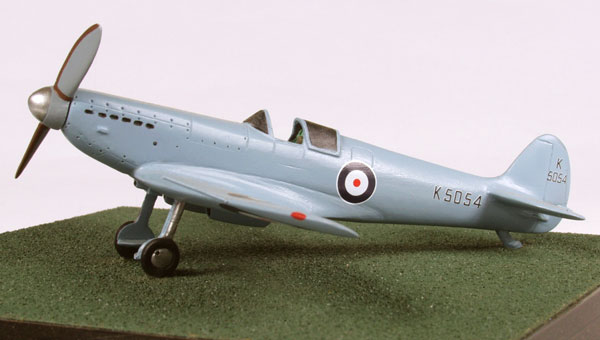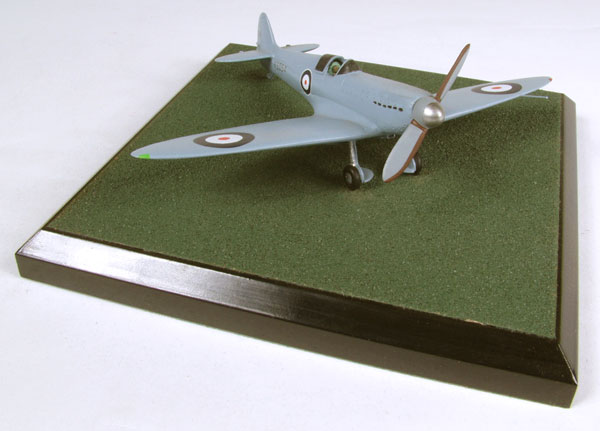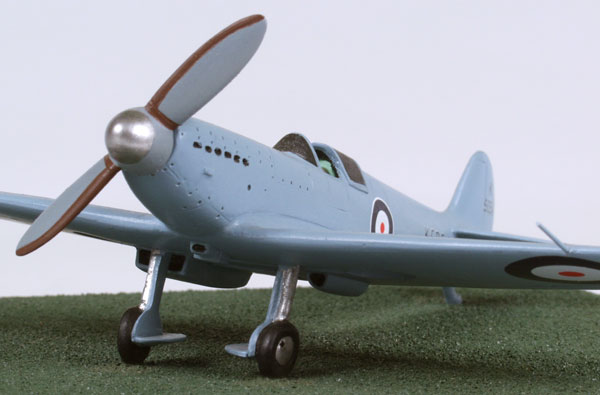Supermarine Spitfire Prototype
Supermarine Type 300 ‘Spitfire’ Prototype K5054 RAF Hendon 1937.
By comparison with its contemporary the Hawker Hurricane, the Spitfire was a generational leap in design rather than a direct development from its predecessors. Its immediate ancestor the Supermarine 224, designed in response to specification F.7/30 had an open cockpit, fixed undercarriage and untapered wings and looked heavy and clumsy, leading R J Mitchell to devise an altogether new design with an all-metal monocoque structure; and the elliptical wing that was to become the aircraft’s identifying feature through almost all its development was devised from the need to accommodate eight .303″ machine guns in the thinnest possible flying surface.
With specification F.37/34 written around Mitchell’s new design, the prototype K5054 first flew from Eastleigh on 6 March 1936 in the hands of “Mutt” Summers – after which he is said to have remarked “Don’t touch anything”! – and within three months the type had attracted an initial order for 310. The finish of K5054 on its first flight is still the subject of much argument, and it is shown here as it appeared at the RAF Hendon display in 1937. In September of that year it was modified to bring it to Mk.I standard and camouflaged; in November 1938 it was transferred to RAE Farnborough and it was there on 4 September 1939 that it crashed, nosing over on landing. The fuselage remained there for a while, and was used for test installation of camera equipment.
Scale 1:72 Wingspan 6.14″ (156 mm)
Base size 6.37″ (162 mm) square (No. 4)
Weight not including base 6.75 ozs (189 grams)
Total number of models produced 91




